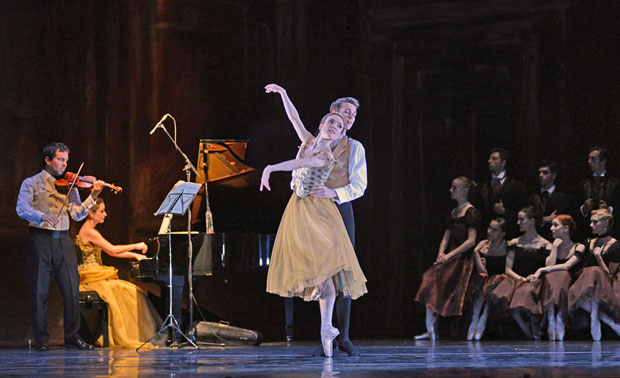
© Dave Morgan. (Click image for larger version)
New English Ballet Theatre
Tryst – Devotion and Betrayal: Tangents, Toca, Orbital Motion, Bad Girls, The Kreutzer Sonata
London, Peacock Theatre
2 July 2014
Gallery of pictures by Dave Morgan
www.nebt.co.uk
www.sadlerswells.com
Sometimes in summer there seem to be youth performances everywhere in London. This week English National Ballet School performs in Wimbledon, the National Theatre has a week-long Connections festival of performances from different youth groups and the Royal Ballet School has shows in the Linbury Theatre. But New English Ballet Theatre offers a rather different proposition from these graduation shows.
Karen Pilkington-Miksa founded the company to offer performance opportunities to dancers who have graduated but are still in the early years of their careers and who could profit by further stage experience. It’s also a chance to for young choreographers and designers to appear on a West End stage. Some of the 14 dancers for this engagement return from 2012, others are new. They come from all over Europe, with different kinds of training and experience.
NEBT had their inaugural performances here at the Peacock in 2012. This programme follows a similar pattern of new work from young choreographers. Some of the works have featured in the Royal Ballet’s Draft Works programmes but here they are in a revised and expanded form, with richer production values in terms of design, lighting and costuming. Live music, again provided by those early in their careers, also accompanies some pieces. If you are keen on seeing new work, this is an attractive package of five varied pieces which is very well presented.
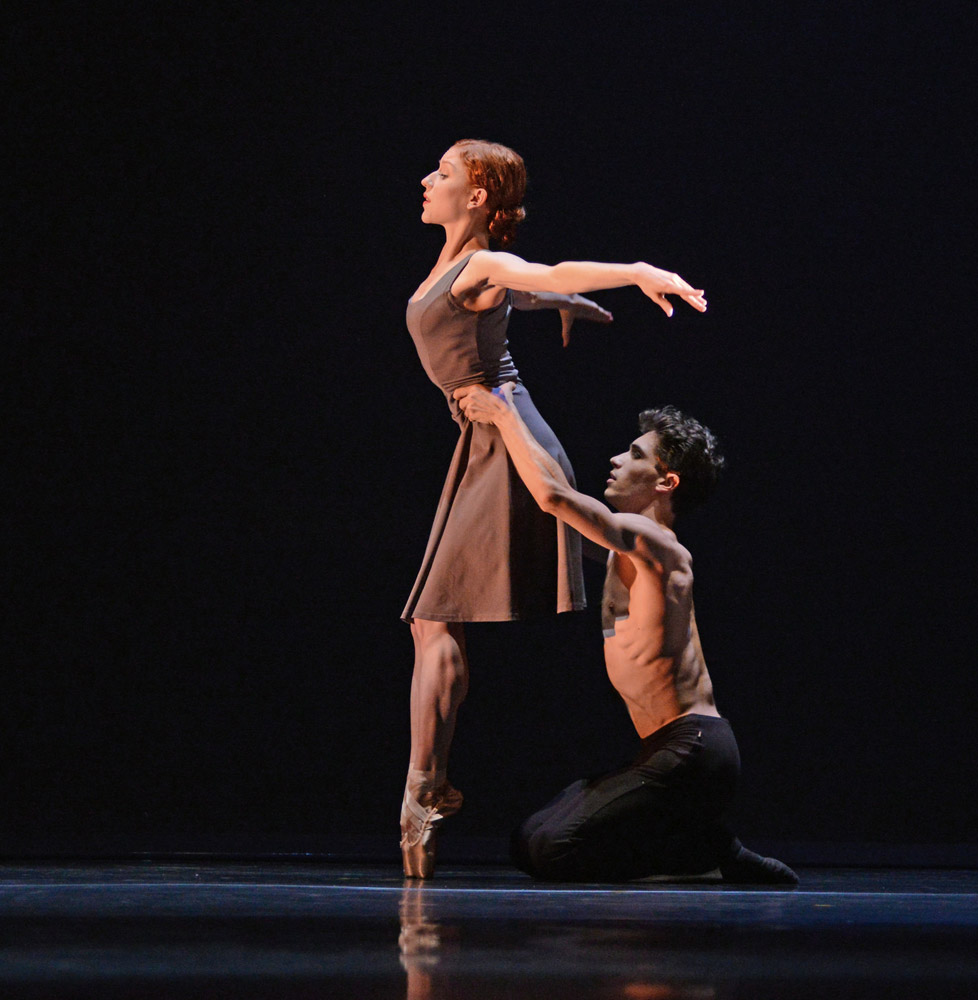
© Dave Morgan. (Click image for larger version)
Tangents, a work for three couples, opened the proceedings. The choreographer is Daniela Cardim Fonteyne, a former dancer with Dutch National Ballet. It was set to selections from Mussorgsky’s Pictures at an Exhibition, played live by an onstage pianist. The familiarity of the music proved problematic. It is already so closely associated with visual images that thoughts of those interfered with the different pictures portrayed on stage. She gives us three couples whose relationships are in different sorts of disarray. This is rather well-trodden ground. But a male solo, fast and intricate with rapid changes of direction, suddenly brought the piece to life. This showed much more invention and imagination; it also seemed a good example of fulfilling the company’s aims of giving their dancers a real chance to be seen to shine.

© Dave Morgan. (Click image for larger version)
There are short films for the choreographers to tell us a little about their works. It’s heartening to hear many speak about their passion for their choice of music, and the importance of collaboration with their designer or librettist. But occasionally less might be more. Erico Montes described the narrative underpinning his six minute piece, Toca. This concerns a brother and sister separated at birth who meet in later life, form an instant connection, become romantically entangled and then discover the truth. This isn’t a story that is an obvious or easy candidate for expressing in dance terms. If you had watched it without that information, you would see a pleasant duet of increasing warmth for two dancers dressed in white who then have a falling out. But the dance as staged can’t fully support the weight of the story that has just been imparted to you.
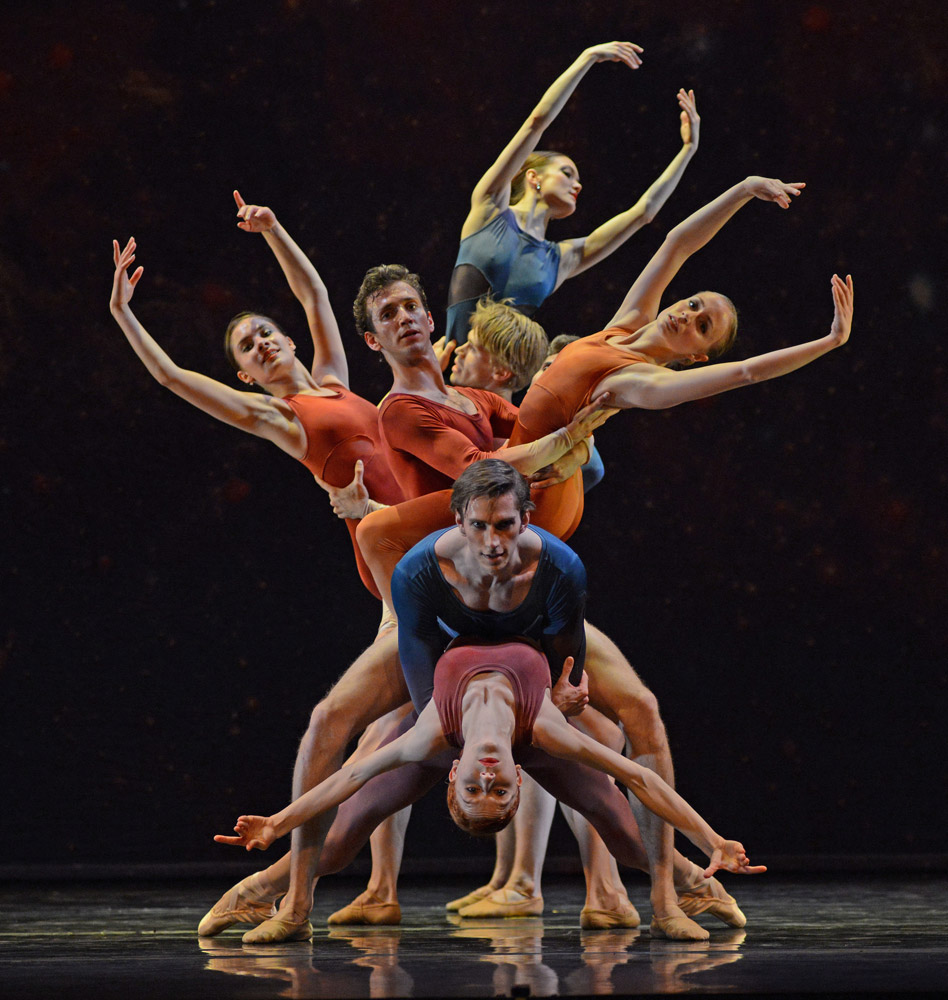
© Dave Morgan. (Click image for larger version)
The most satisfying and complete work of the first half was Valentino Zucchetti‘s Orbital Motion, set to Philip Glass’s Violin Concerto no 1. He had used one movement of this for a Draft Works piece for the Royal Ballet in the Linbury previously. Now he builds on this to use the full work. Zucchetti has made a number of pieces over the last few years, but this is his most assured and fully-formed work to date. The sense of completeness is not just from the sense of working through a complete musical composition rather than just an excerpt, or from seeing a professional presentation in terms of design, lighting, and costumes rather than practice clothes. It is the sense that here he’s had a chance to really work through his ideas in full and give us a structure with a beginning, middle and end.

© Dave Morgan. (Click image for larger version)
It’s an abstract piece. He uses a lead couple in yellow, supported by four further couples in multiple colours. It’s ambitious in its complicated groupings and patterning. He really does ask a lot of the dancers, with some ferociously difficult lifts with repeated changes of position while high in the air. If the execution of this sometimes looked effortful, then one had to think of the context of the presentation. The company are tackling this because they need this sort of testing stage experience in order to grow.

© Dave Morgan. (Click image for larger version)
Kristen McNally previously provided NEBT with a popular hit in 2012 with Lonesome Gun, a mad western-themed romp. Her Bad Girls which rounded off the first half isn’t quite as immediately attractive as that, but it’s still an appealing example of her quirky, fresh and idiosyncratic style. You certainly don’t go to her for conventional ballet portrayals of droopy yearning women.
Here we have five ferociously manipulative female Stepford-wives style robots, but they aren’t there to please men. No the boot is on the other foot as the hapless pizza delivery boy is about to find out. This is expanded from its recent Royal Ballet draft works version from 2 to 5 women. The women aren’t as hard faced or threatening as the earlier version. It’s done with more mischief than aggression.
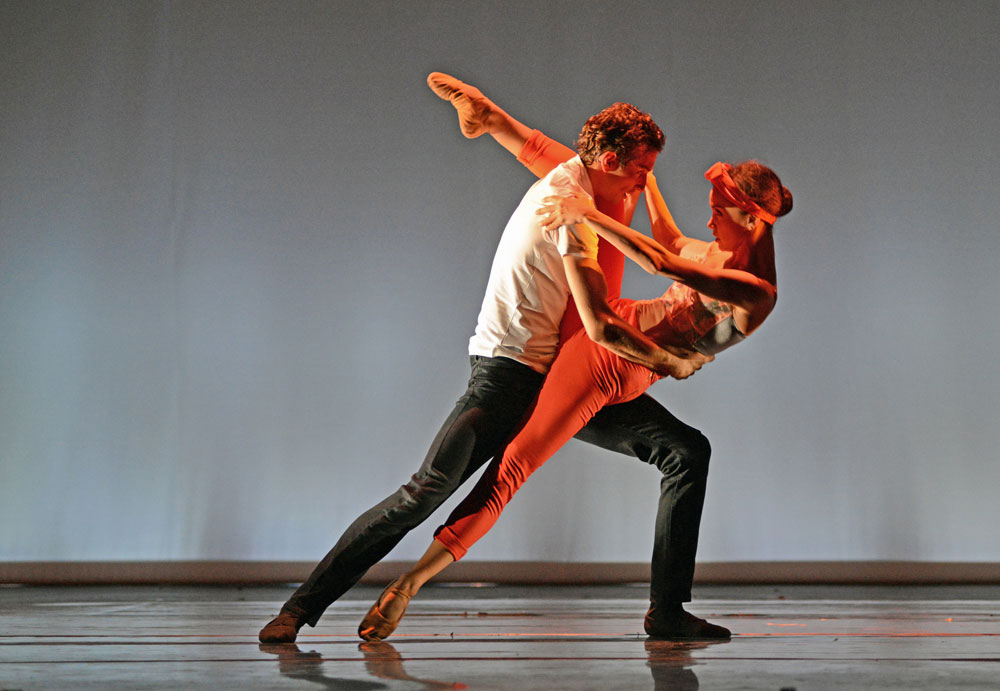
© Dave Morgan. (Click image for larger version)
The second half was devoted to a new narrative work from Andrew McNicol who had previously provided short works for the NEBT 2012 programme. The Kreutzer Sonata takes its plot and inspiration from the music of Janáček and Beethoven and from the story those works reference of a jealous husband consumed with rage over his wife’s friendship with a violinist.
It’s an ambitious presentation, using all the members of the company. There are very effective and flexible designs from Emma Bailey, winner of a Linbury prize for set design. She provides a shadowy evocation of a stylish period living room, and elegant dresses for the party guests. There is live music from the Sacconi Quartet in the pit and an onstage violinist and pianist for the Beethoven.
Once we are past what feels like an extraneous early scene in a brothel, McNichol gets his narrative across clearly and briskly and his three leading characters are strongly characterised. Some of his dance vocabulary shows the influence of Kenneth MacMillan but it is confidently put together.
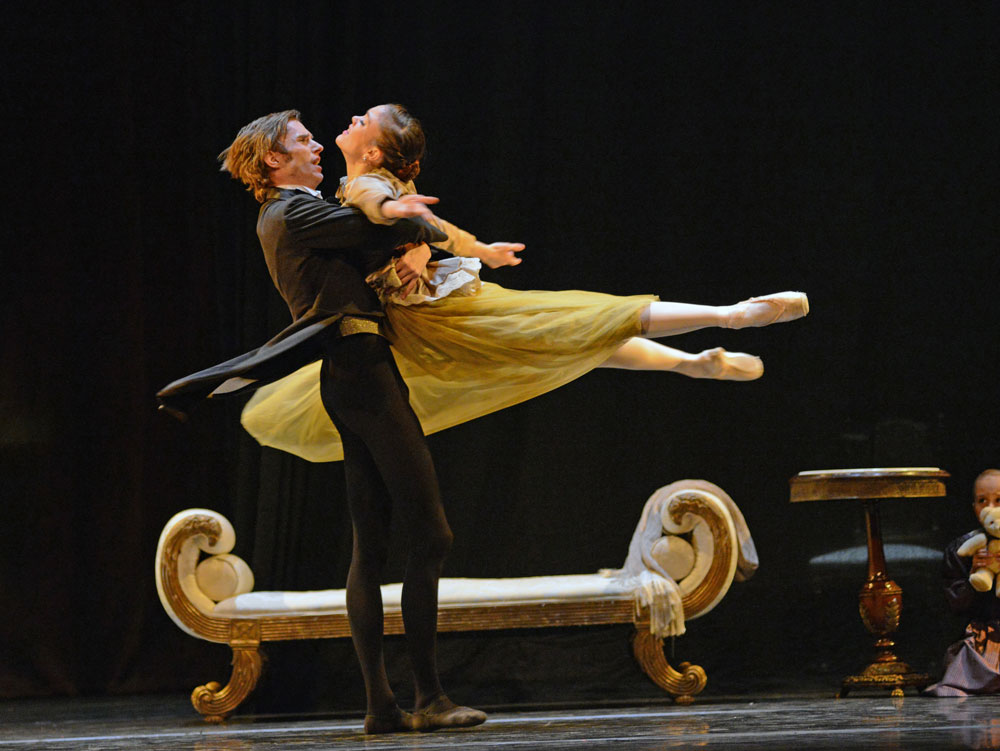
© Dave Morgan. (Click image for larger version)
The aim of the company is to offer stage experience to all its collaborators and McNichol has certainly seized on that opportunity with relish here. He had originally worked with Isabelle Gasparini as the Wife while developing the Kreutzer Sonata. She has now joined the Royal Ballet and in the programme happily credits the experience of developing her first created role as instrumental in her development as a dancer. Let’s hope that NEBT continues to offer these opportunities and can produce more success stories.












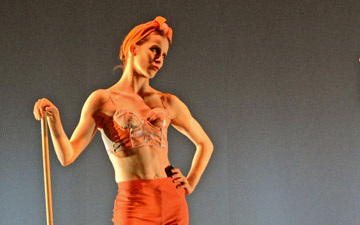
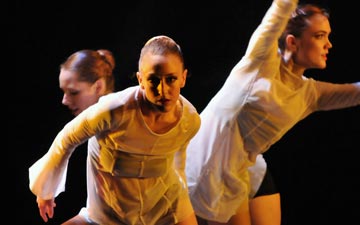
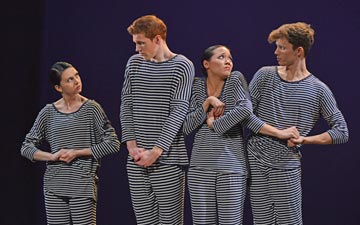
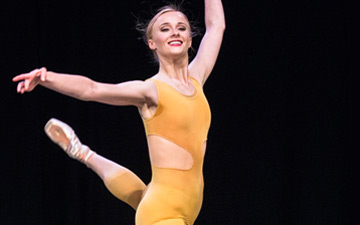

You must be logged in to post a comment.